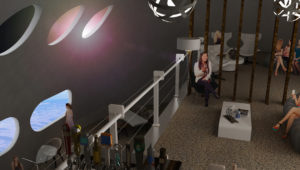The University of Cambridge did the research together with ARM company which used algae to power a computer.
The published research in the Journal of Energy and Science said that the result of the search was a system the size of an AA battery and contained Synechocystis which is a non-toxic species of blue-green algae. The special thing about these algae is that during photosynthesis it creates a low current that is conducted through an aluminum electrode to a microprocessor and is planned to be used in the Internet of things in the future.
As it is powered by the natural process of photosynthesis it is a sustainable way to power up devices that require less battery power. Aside from this being reliable and renewable it is made up of recyclable materials thus being economical.

The research was done in a “domestic semi-outdoor environment” where all-natural light and temperature were used to conduct photosynthesis. The algae only conducted electricity at night as the process of photosynthesis only occurs during the day. Due to this, the computer could be provided with electricity infinitely.
After the energy was captured, it was used to power an ARM chip which consumed .3 microwatts per hour as compared to this a normal desktop computer uses one hundred watts per hour which roughly would require 333,000,000 algae batteries to run it.
Paolo Bombelli who is the first author who summarized the experiment of the study mentioned that he was amazed at the results of the experiments and that his team initially predicted that the electricity generation would stop working after a few weeks, but it did not. Professor Christopher Howe who is the joint senior author of the paper also said that this photosynthetic device does not die down as compared to a battery as it uses light as its energy source.
References:
- Vincent, J. (2022, May 16). Scientists create algae computer powered by photosynthesis. The Verge. Retrieved May 17, 2022, from https://www.theverge.com/2022/5/16/23074715/algae-computer-chip-photosynthesis-arm-cortext-iot-biophotovoltaics
- BBC. (2022, May 14). University of Cambridge researchers use algae to power computer. BBC News. Retrieved May 17, 2022, from https://www.bbc.com/news/uk-england-cambridgeshire-61443073
- *, N. (2022, May 14). Small biological energy cell containing algae able to power a computer for a long time. Science News. Retrieved May 17, 2022, from https://science-news.co/small-biological-energy-cell-containing-algae-able-to-power-a-computer-for-a-long-time/









